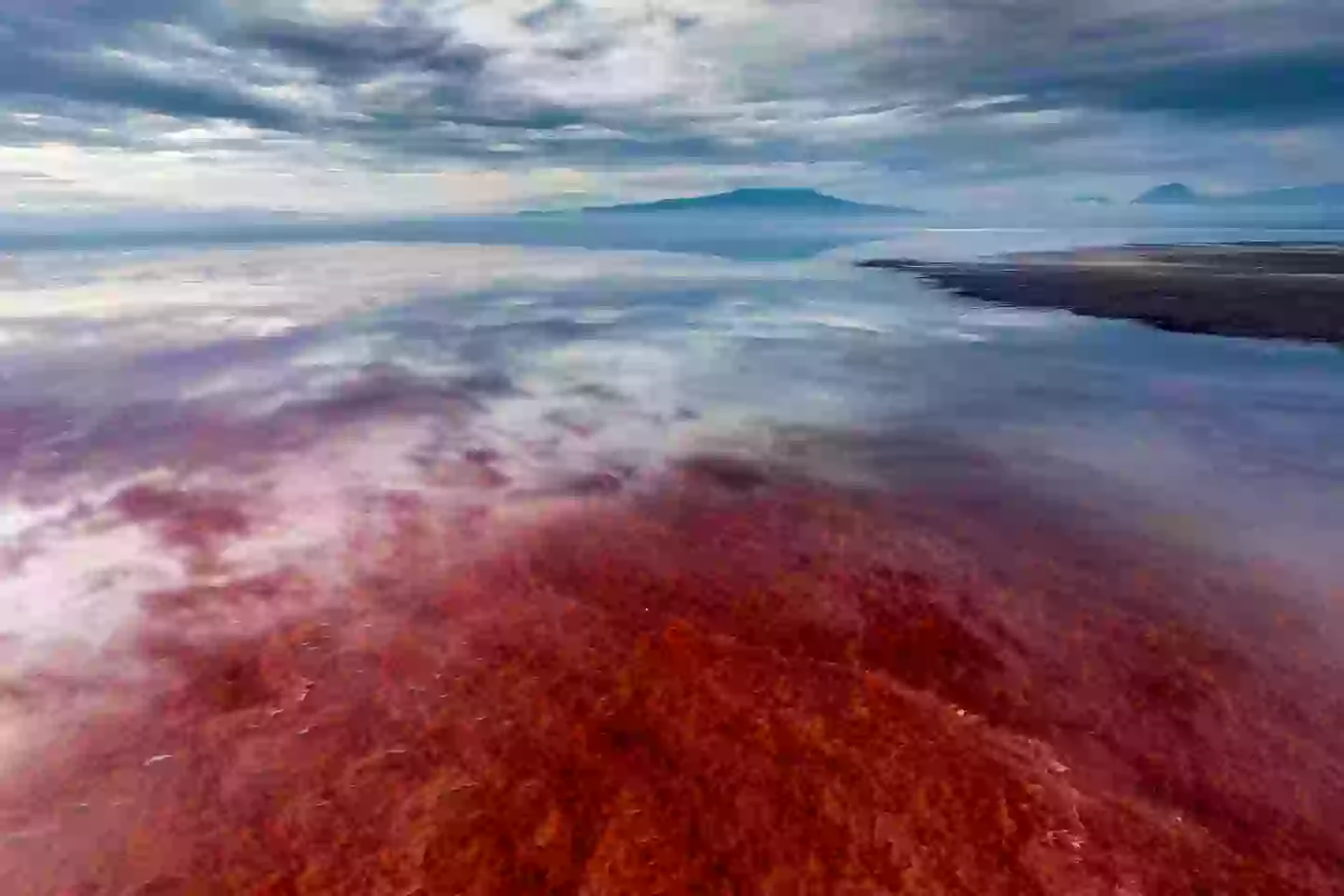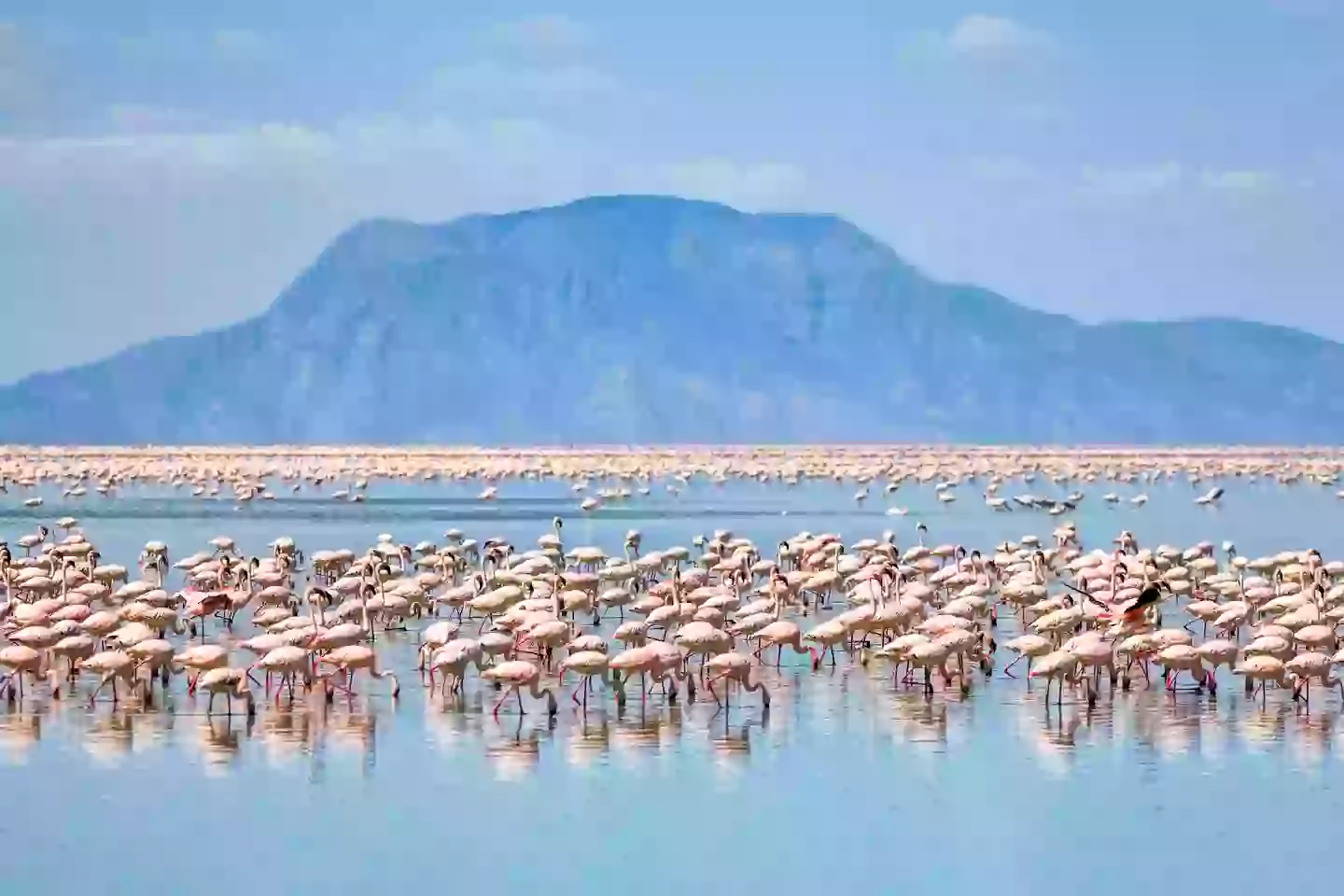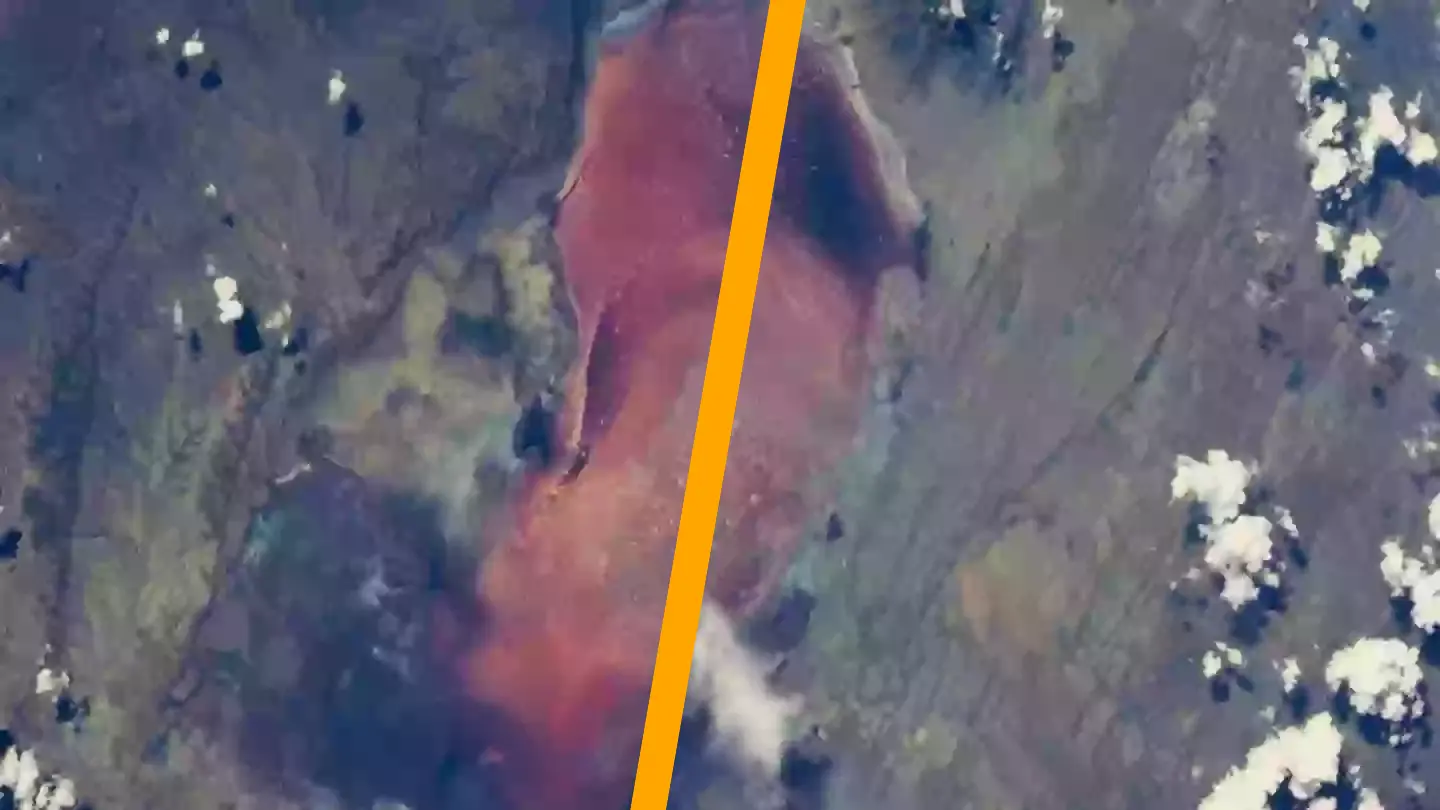Lake Natron in northern Tanzania is known for its breathtaking appearance, but the reality behind its beauty reveals it as “one of the world’s deadliest” lakes, turning animals into ‘stone.’
Positioned near the Kenyan border, this lake is surrounded by wildlife that seems unfazed by the hidden peril it represents.
The lake serves as an important breeding ground for the endangered lesser flamingo and lies in the shadow of the active volcano Ol Doinyo Lengai, also known as the ‘Mountain of God.’

Given the unpredictable nature of active volcanoes, an eruption could happen at any moment, increasing the risks associated with visiting the visually appealing lake.
The lake’s distinct pink hue is due to cyanobacteria, a type of algae. This bacterium is highly toxic to both animals and humans, causing severe harm by releasing chemicals that damage cells, the nervous system, and liver.
Additionally, the water contains sodium carbonate, which was historically used in Egyptian mummification and is harmful to the skin.
Contact with the lake can turn animals into ‘stone’ due to the salt and high alkaline pH levels, which result in burns and subsequent calcification of their bodies.
Fortunately for the affected animals, the process results in a swift death.

Despite the dangers of interacting with Lake Natron, it remains a favored tourist spot due to its picturesque landscape.
Wildlife photographer Nick Brandt, who has captured images of calcified animal remains, shared with NBC News: “I unexpectedly found the creatures – all manner of birds and bats – washed up along the shoreline of Lake Natron in Northern Tanzania. I took these creatures as I found them on the shoreline, and then placed them in ‘living’ positions, bringing them back to ‘life.'”
The area receives around 400mm of rainfall annually, but the intense heat causes this precipitation to evaporate before it can make contact with the lake’s surface, often referred to as ‘phantom rain.’

